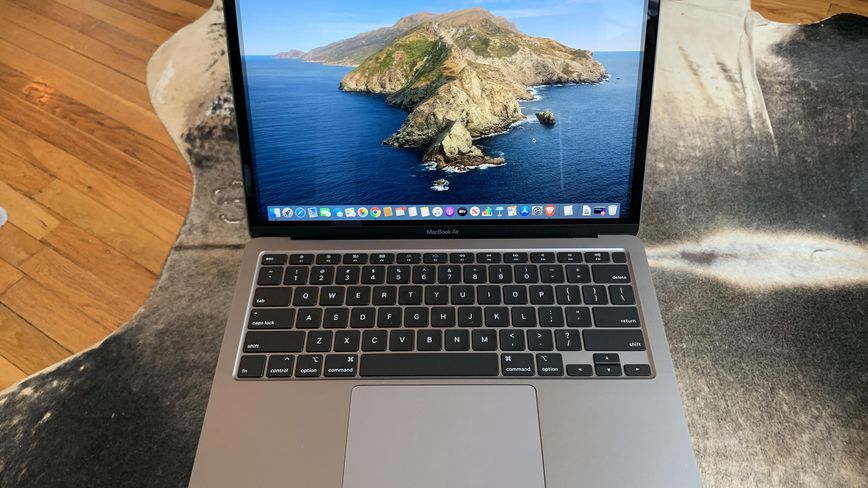
Dan Ackerman/CNET
Take a 2019 13-inch MacBook Air. Now take the brand-new 2020 version. Put them next to each other and try to tell the two apart. You can’t; they’re identical. Until, that is, you open both lids. It’s a subtle thing, but if you look closely there’s a new look and feel to the keyboard. The flat, island-style keyboard is slightly raised on the new model versus the older one.
Like
- New keyboard design is a huge improvement.
- Double the starting storage.
- Starting price back down to $999.
Don’t Like
- The base model uses an Intel Core i3 CPU.
- No changes to ports and connections.
- The webcam is need of an upgrade.
- Upgrading RAM is especially expensive.
That’s because this is Apple’s Magic Keyboard, a design first seen in the 2019 16-inch MacBook Pro and based on the standalone Magic Keyboard for iMac ($1,799 at Walmart). It’s a big improvement on the long-suffering butterfly keyboard found in most Macs in recent years, which has been plagued by breakdowns and general consumer dissatisfaction.
More than anything else, the new Magic Keyboard is what makes the latest Air such a winner. Yes, it solves a problem largely of Apple’s own making, but the end result is highly satisfying, especially when coupled with new $999 starting price and component changes, which is why I consider it worthy of an Editors Choice nod, with the caveat that there’s a specific configuration that represents the best overall value.

Now playing:
Watch this:
Hands-on with the 2020 MacBook Air
8: 04
The new keyboard isn’t the only interesting new thing about the new MacBook Air. Also big news is that the laptop finally officially returns to the classic $999 (£999, AU$1,599) price, after a few years of starting at $1,199 and then $1,099 (although some retailers would regularly discount it by $100 or so).
There is, however, a bit of a catch. That $999 starting price only includes an Intel Core i3 CPU, not the Core i5 one would expect for that price. Beyond that one issue, most of the other news is good. New CPUs upgrade options include quad-core Intel 10th-gen chips. The default storage jumps from a measly 128GB to a more reasonable 256GB. Intel Iris graphics are a step up without adding extra hardware from AMD or Nvidia.
The price is right
There was once a time I called the 13-inch Apple MacBook Air “the most universally useful laptop you can buy.” That was back when the Air was a very college-student-friendly $999 and clearly outclassed anything in the Windows world you could get for the same price. Others might have matched or beat its processor speeds, but the Air had a slim, unibody aluminum shell, a near-perfect keyboard and an OS that wouldn’t drive you (quite as) crazy.
But that was a lo

